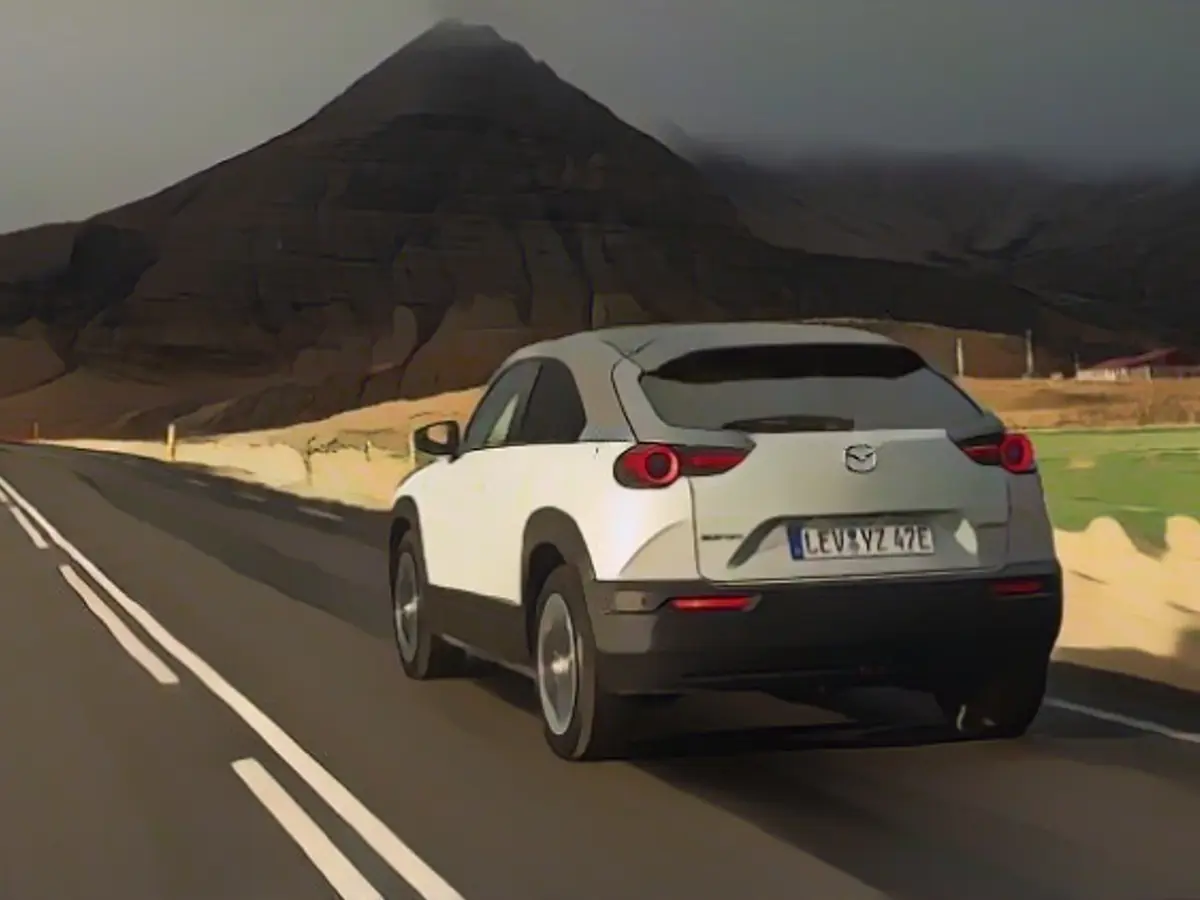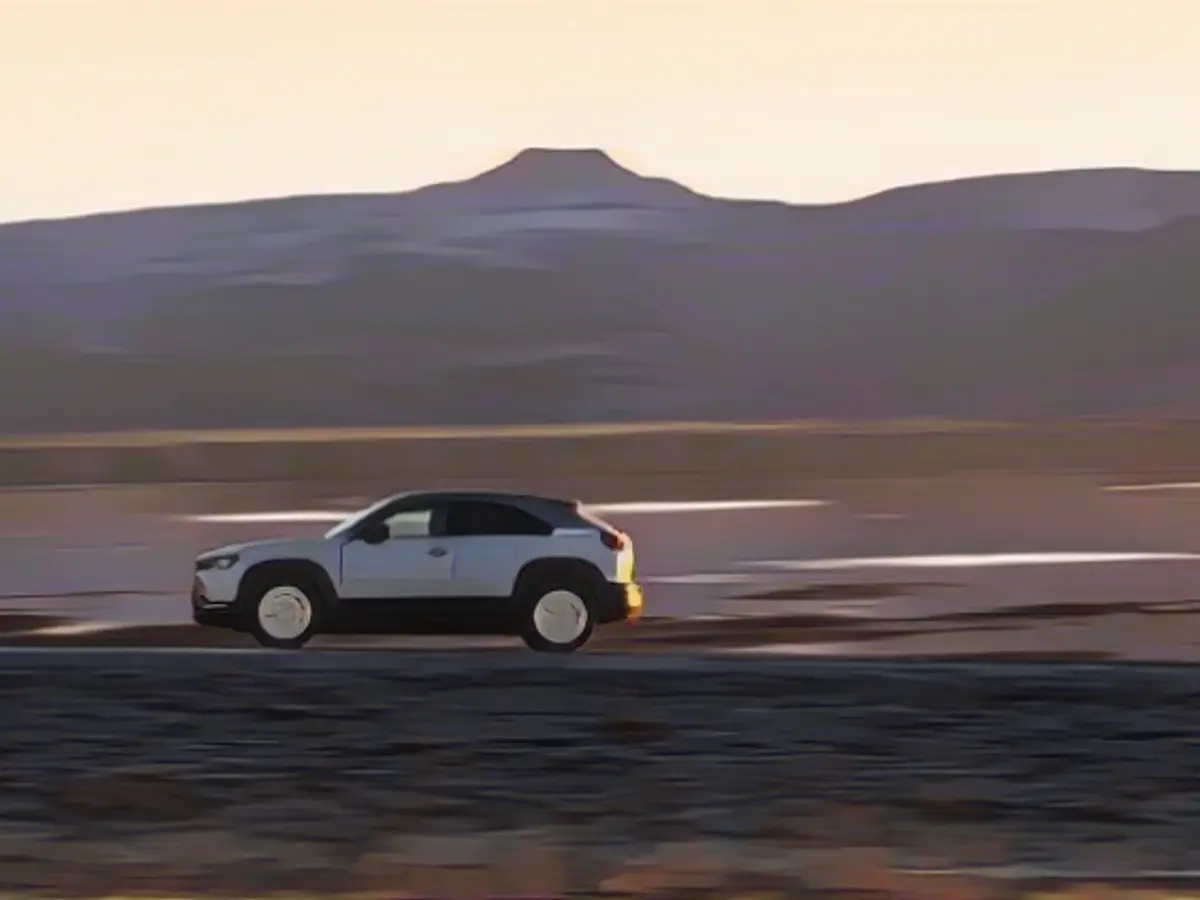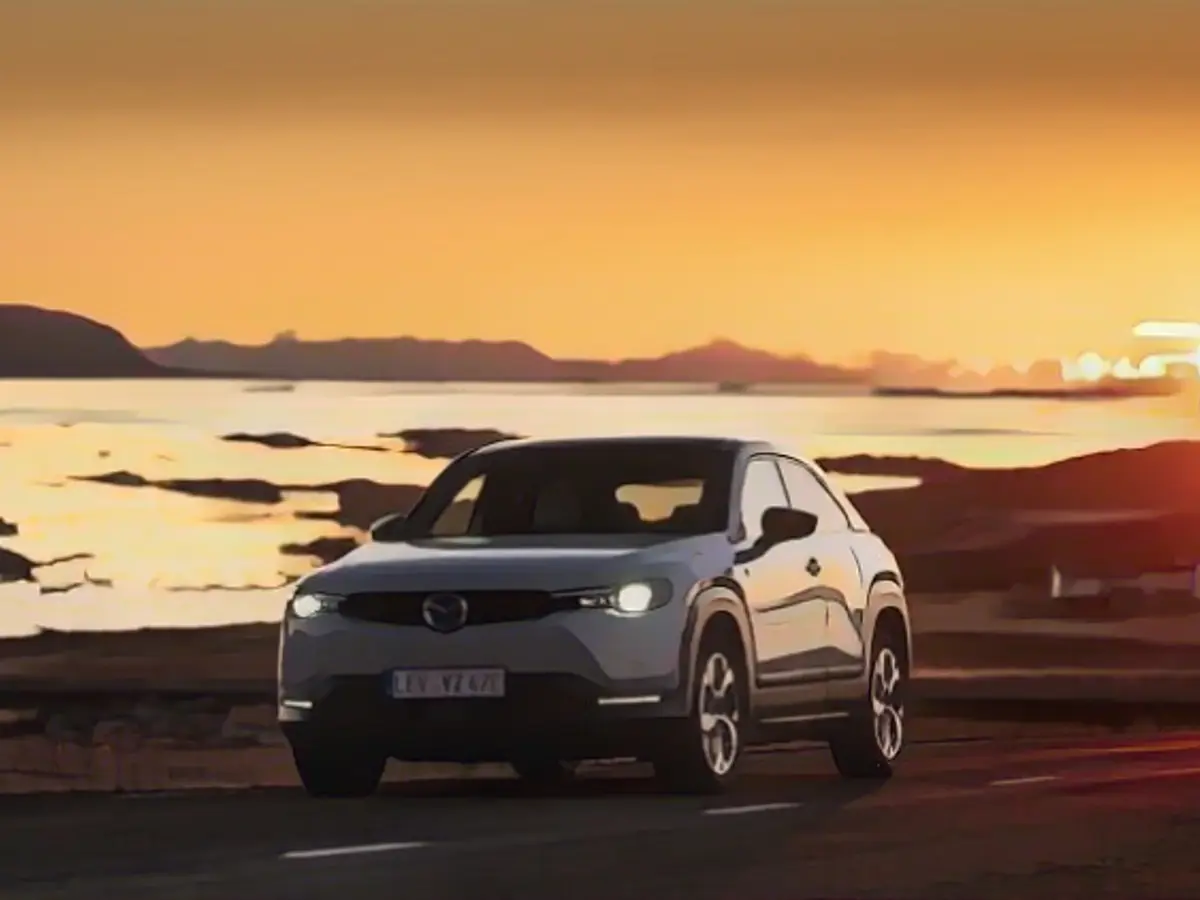Mazda MX-30 R-EV - with Wankel engine into the electric age
The Mazda MX-30 with its headstrong body and small batteries is an electric exotic. The new range extender makes it even more unusual. This is because the Japanese car manufacturer is unearthing an almost forgotten technology.
Mazda is once again living up to its image as a brand for unconventional solutions. This is demonstrated by the new electric MX-30 as the R-EV. This is not only the first new electric car with a range extender since the BMW i3. The additional power plant on board is also operated by a Wankel engine. This rotary piston engine has been phased out by all other manufacturers for decades - only Mazda remains loyal to it.

However, the last time the Japanese built it in series production was over ten years ago with the RX-8 sports car. The Japanese are also breaking with convention in terms of pricing policy - and are offering the upgraded model for the same 35,990 euros as the battery-only version. There are now two motors on board and the range is more than three times as long at just under 700 kilometers.
Drive further with Wankel technology
To make room for a 50 liter tank, Mazda has reduced the battery from 35.5 to 17.8 kWh. This means that only about 80 kilometers of purely electric driving would be possible. But long before the batteries are empty, the Wankel has its say.
This single-disc rotary engine with a 0.8 liter combustion chamber delivers 55 kW/75 hp. It is particularly compact, lightweight and smooth-running and drives a generator at constant speed levels to produce electricity - making it a serial plug-in hybrid.
This extends the range by a further 600 kilometers. The driver has a say in how the two engines interact - by starting the charging process manually, stopping the generator with consideration for the neighbors or specifying certain residual values for the required range, for example.
With feeling and without fear

There is hardly any change to the driving performance, even if the electric motor now has 125 kW/170 hp instead of the previous 106 kW/145 hp. The MX-30 now needs 9.1 seconds to accelerate from 0 to 100 km/h and the top speed is 140 km/h, just like before.
However, the feeling is different - in two respects. Firstly, because although there is no longer a mechanical connection between the engine and the wheels, it hums again when driving. And secondly, because you're no longer constantly looking nervously at the range display and instead feel confident enough to set off on long journeys.
The charging power may still be moderate at 11 kW at the AC wallbox and 35 kW at the DC column. But the fuel flows at the filling station in just a few minutes, and the MX-30 is ready for another 600 kilometers. Electric driving has rarely been so relaxed.
Unconventional design

The unusual drive is a perfect match for the MX-30, because regardless of whether it has a battery only or an additional petrol tank - the 4.40-metre-long compact is one of the most unconventional electric vehicles on the market.
This starts with the unconventional body, which, like the BMW i3 recently, has two doors in the rear that are hinged against the direction of travel. However, these can only be opened when the front door is also open. This is impractical because you always need two free hands and lots and lots of space in the parking space. But of course it helps when getting in - especially as the rear is not the most spacious.
Unusual ambience

And that ends with the unusual operating concept. Of course there are digital instruments, a head-up display and a screen. Even if the cockpit with its leather and cork trim otherwise looks wonderfully old-fashioned.
The screens are unusually small compared to the new competition - especially from China - and are also immune to the fingertips: Where others are incorporating more and more touch technology, the Japanese still have a classic turn-and-push dial.
Just the same when driving
When it comes to driving, on the other hand, the Mazda refrains from any flamboyance - and demonstrates the proximity to the MX-5 roadster that the name suggests. Because crisp and compact, firm and precise and, above all, significantly lighter than all the cumbersome SUVs, the MX-30 inspires a driving pleasure that has become rare among electric models. And while the assistance systems in many Asian newcomers are more annoying than useful, here they remain pleasantly in the background.
Conclusion: The Wankel engine, the range extender, the old-fashioned operating system and the unconventional body design: Mazda is happy in the role of the non-conformist. But customers also benefit. Because as an exotic among the electrified, the MX-30 is unmistakable - and with the combustion engine as an extension cable, it makes the transition easier for all those who are still unfamiliar with the new electric world without a net and double bottom.
Data sheet Mazda MX-30 e-Skyactiv R-EV
| Engine and drive: | Standard plug-in hybrid drive with electric motor and rotary engine, generator and lithium-ion battery |
| Max. Output: | 125 kW/170 hp |
| Max. Torque: | 260 Nm |
| Drive: | Front-wheel drive |
| Transmission: | 1-speed automatic |
| Dimensions and weights | |
| Length: | 4395 mm |
| Width: | 1795 mm |
| Height | 1560 mm |
| Wheelbase: | 2655 mm |
| Unladen weight: | 1853 kg |
| Payload: | 473 kg |
| Trunk capacity: | 350-1155 liters |
| Driving data: | |
| Top speed: | 140 km/h |
| Acceleration 0-100 km/h: | 9,1 s |
| Average fuel consumption: | 1.0 liter/100 km |
| Range: | 680 km |
| Charging power AC/DC: | 11 kW/36 kW |
| CO2 emission: | 21 g/km |
| Fuel consumption: | Super |
| Emission class: | Euro 6d-ISC-FCM |
| Battery capacity | 17.8 kWh |
Read also:
Mazda continues to push the boundaries of automotive innovation with the introduction of the MX-30 R-EV, their first electric car with a range extender. This unique model stands out in the market since it is equipped with a Wankel engine, a technology that has been largely abandoned by other manufacturers.
Moreover, the electrified Mazda models continue to challenge conventional pricing policies, offering the upgraded version of the MX-30 R-EV for the same price as its battery-only counterpart, while benefiting from a significantly longer range, thanks to the additional power from the Wankel engine.
Source: www.ntv.de








